How To Adopt A Dog – Just In Time For Summer
Adopting a dog from a shelter is a big decision - so here's what you need to consider & the steps to take to ensure a successful adoption.
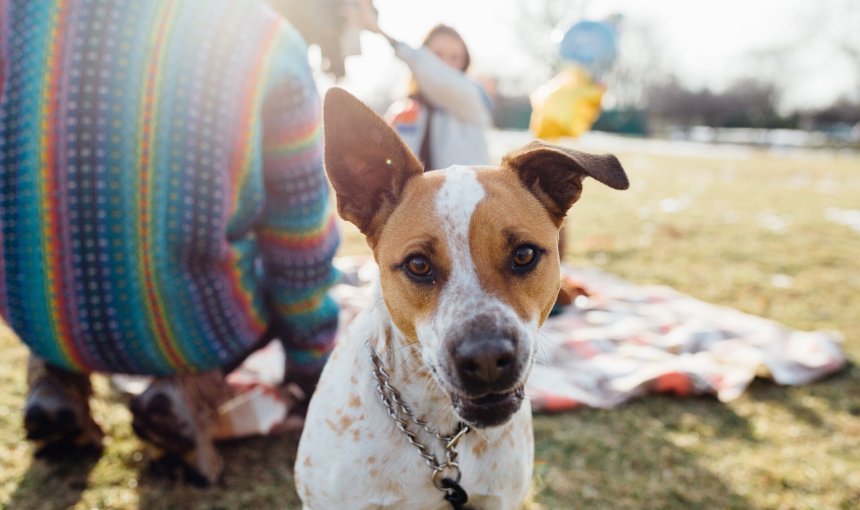
So, you think you’re ready to adopt a new dog into your family? After all, with summer at our doorsteps, it’s the perfect time to enjoy some outdoor time with your new buddy! But have you actually considered how to adopt a dog exactly?
In a nutshell: while you don’t need to tame your enthusiasm, you do need to remember to take care of the important planning, research, and steps that are necessary to make your adoption story a success.
So without further ado, here are our tips for success that you should consider when you adopt a dog.

Find out how your dog spends their time.
Read moreHow much does it cost to adopt a dog?
Now when it comes to adopting a dog, your fees might vary quite considerably. For example, from the Animal Humane Society, your estimated adoption fees for a dog might range between $166-$767.1
How come? Well, because when it comes to calculating adoption fees, most shelters take into account a whole range of factors. Including:
- The dog’s age, size, and breed
- A veterinary examination – including followups
- Any pest control, including flea and tick medications
- Spaying or neutering, if necessary
- Other administrative fees
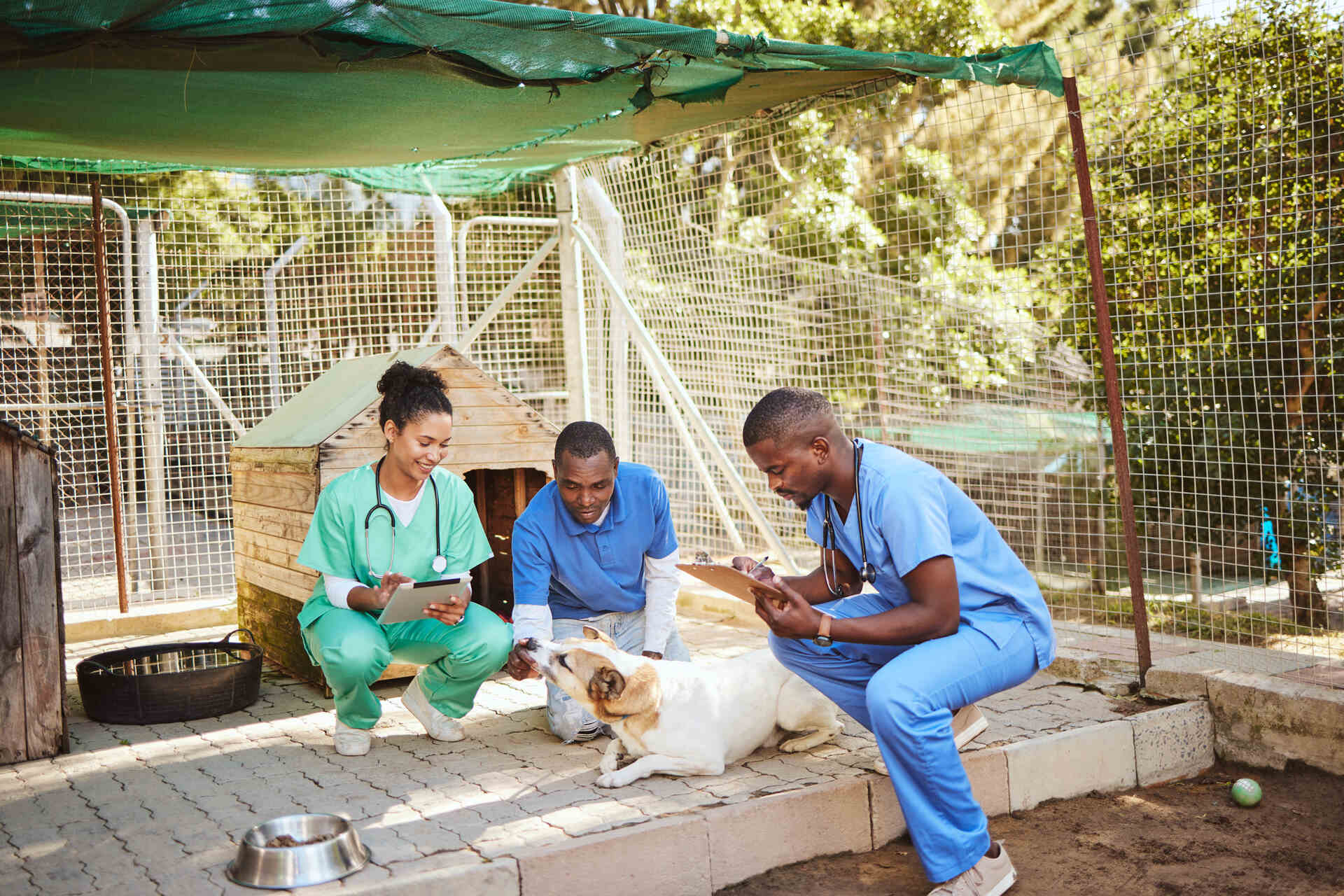
Now these are just adoption fees – they don’t include your ongoing costs for caring for your new buddy. (Including upcoming vet treatments, microchipping, training, pet insurance, vaccinations, and the like.
So before you head off to your local shelter, take a good, hard look at your budget – and figure out whether a dog can comfortably fit into one.
Read more: How Does Pet Insurance Work? A ‘Paw by Paw’ Breakdown
How old do you have to be to adopt a dog?
In general, you’ll need to be at least 18 years of age to adopt a dog – or the minimum required age of adulthood, depending on where you stay. (Which could be 21, in other cases.)
Besides, you should also ideally have:
- A government-issued photo ID
- Some form of verification that a dog of this specific size and breed is allowed where you live
- Be able to prove you have the necessary resources to invest in training and veterinary care for your new dog
- Be willing to sign a legally binding and enforceable contract for the adoption
Check your shelter’s requirements before heading over so you can get all the paperwork down to pay. Then you can consider…
How to adopt a dog: Our step-by-step guide
Deciding you want to get a dog is a great step to take; but it’s not enough to ensure you are fully prepared for welcoming the dog into your home! While you might have your heart set on getting a dog, it helps to do your homework well in advance.
So here are some tips on picking the perfect buddy for your upcoming adventures. Step one:
Figure out which kind of dog is best for you
You might think you’ll do great with any dog – but the traits of each breed can vary considerably. Meaning you’re best off researching which kind of dog might be the best fit for you and your lifestyle.
So you should consider your:
- Lifestyle & flexibility: What is your current lifestyle like? Active, high-energy dog breeds need a sporty dog parent – while low-maintenance, chill dog breeds need a more relaxed one.
- Loved ones: How will those around you be impacted by the new addition? Consider small children, older relatives, and those with allergies.
- Size: Dogs come in all sizes – so think about your living space. Would a small, medium, large, or extra-large dog be best for you?
- Physical maintenance: Different dogs require different levels of grooming and physical care. How much time are you willing to invest?
- Age: Can you handle a high-energy puppy that’s going to be up to mischief all day long? Or deal with the health issues a senior dog might bring?
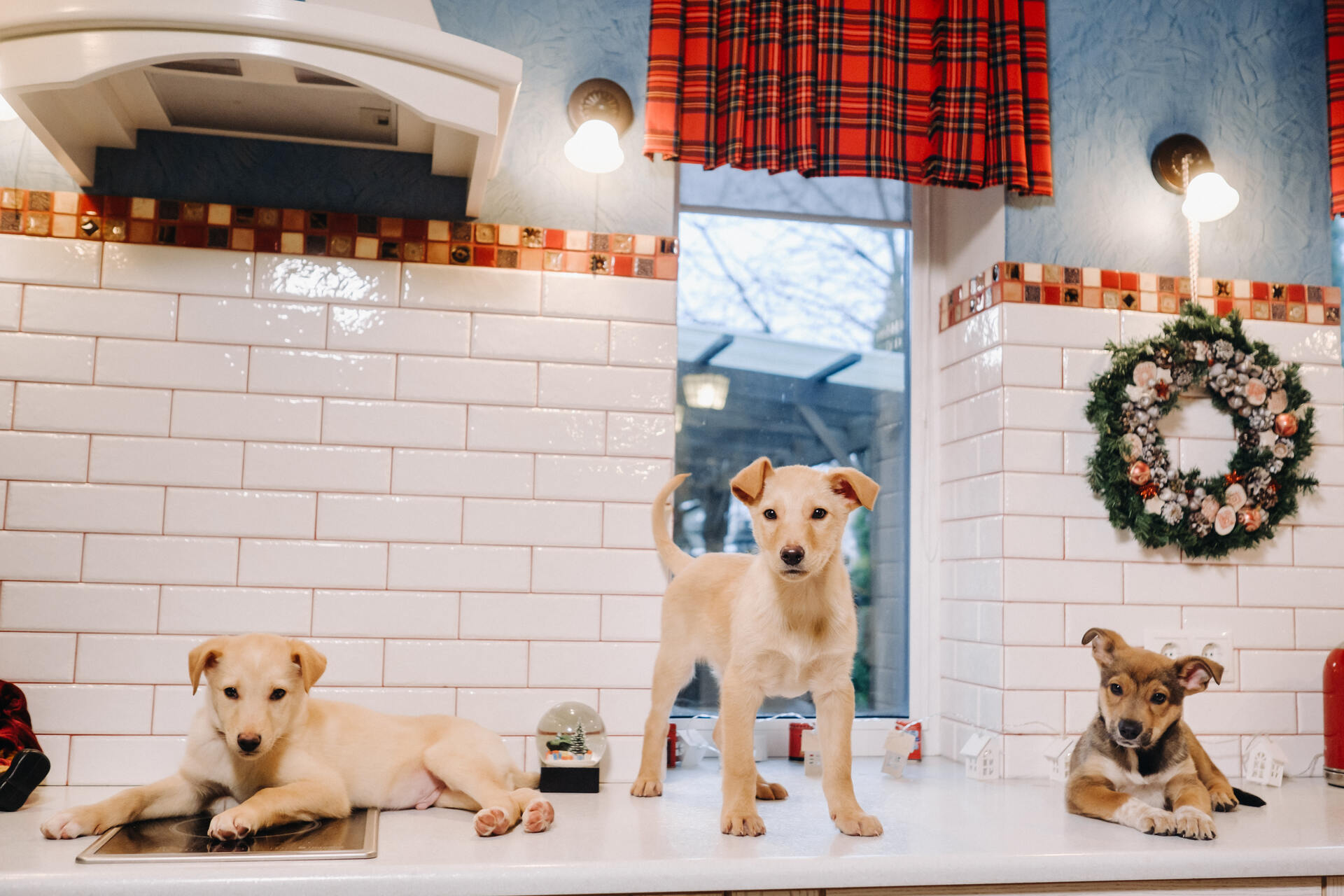
There are more factors to consider, such as your budget, previous experience with dogs, openness to special needs dogs, sociability, personality, housing etc. So take the required time to research and consider all factors before you begin the adoption process so that you can be well-prepared to find your forever friend.
Read more: Runaway Dog: Which Dog Breeds Are Most Likely To Run Away?
Visit your local animal shelter
While it may be tempting to visit your local pet store and buy the first puppy you see, it can be more valuable for the animals and your community to adopt a dog from your nearest animal shelter. In the US alone, these shelters are often overcrowded and underfunded – leaving thousands of well-trained, well-behaved dogs without a loving home.
- You can start by looking at the shelter’s website or calling ahead of your visit to inquire about the dogs they currently have up for adoption, the adoption process, etc.
- Ask them if they have a waiting list which can be added to, in case you are looking for a specific dog breed.
- Alternatively you could search online for dogs in your preferred breed that may be up for adoption in your area.
Once you’ve planned your visit, it’s time to get to know some potential new furry friends.
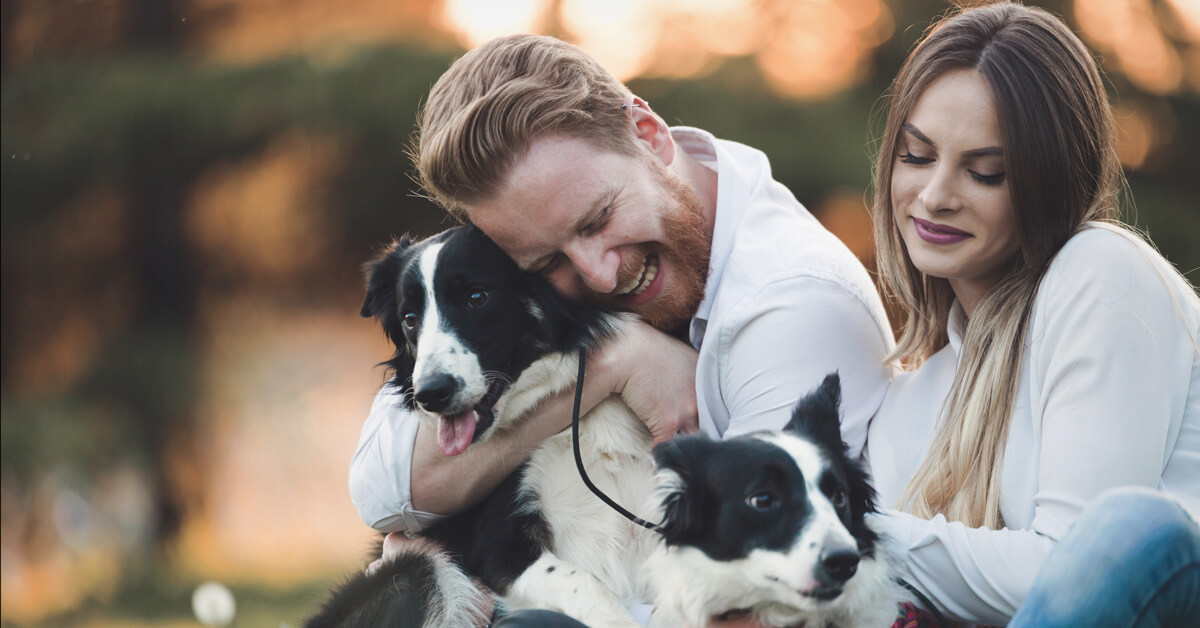
Get to know the dog you’re interested in
During your first visit to the shelter or to meet a prospective dog, you could do the following after you’ve found a dog you like – and which you’d like to get to know better:
1) Observe the dog from far away
First, observe their behavior from a distance. Pay attention to the dog’s actions, mood, body posture, sounds, energy level and sociability with other dogs and humans.
- From far away, does this dog seem like a good fit for you?
- Trust your intuition – does the dog give you a warm, positive feeling, or make you feel uneasy?
- It’s tempting to adopt every set of puppy eyes you see – but be picky. You’ll be spending many years with your new dog, so it’s worth listening to your instincts.
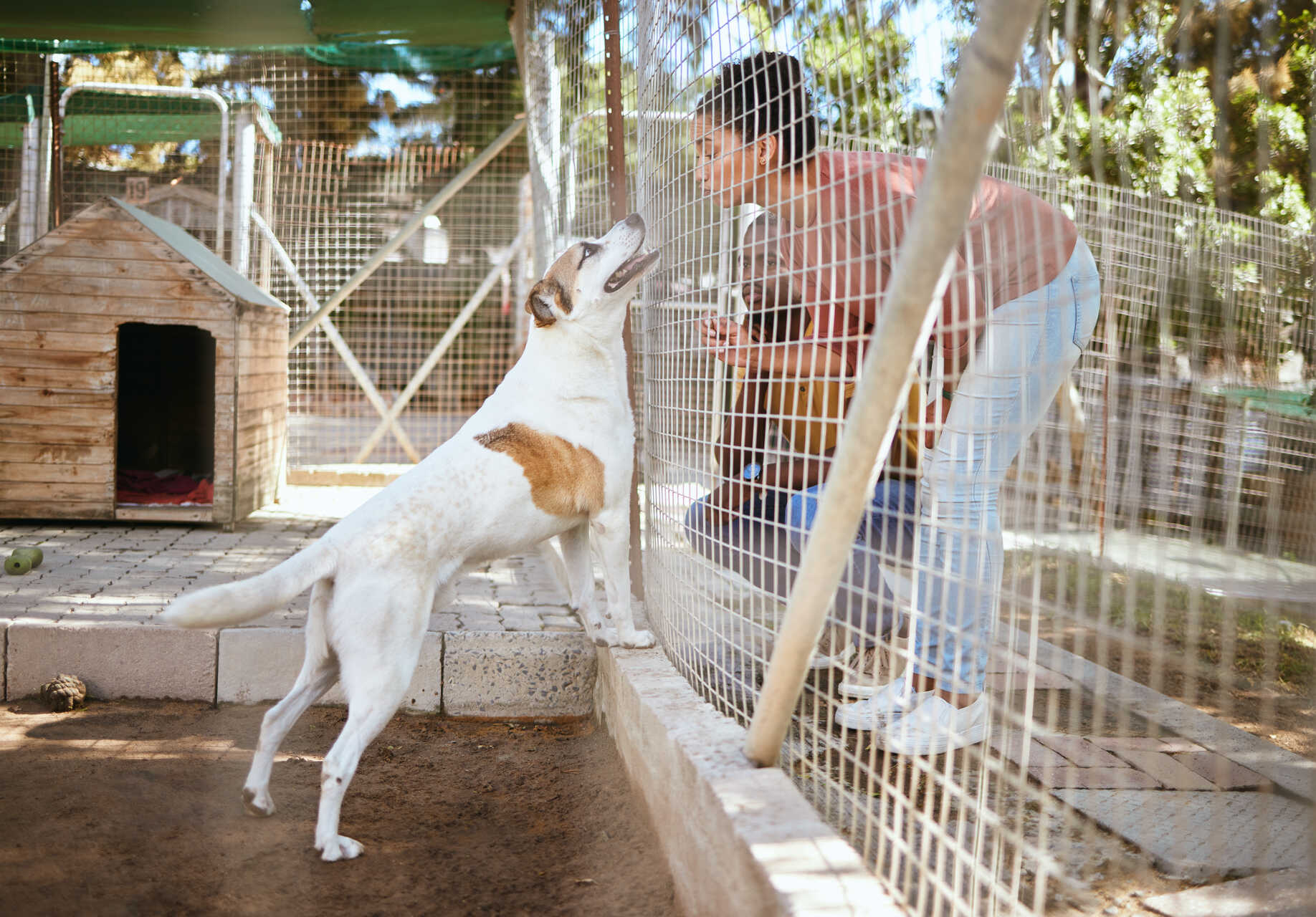
2) Spend some quality time together
Next, take the dog you’re interested in to a separate room – preferably a quiet room with few distractions. Remove the leash, kneel down, and let the dog sniff and interact with you, without trying to engage with them.
- Are they curious and confident? Scared or cautious?
- If the dog you’re assessing has been outgoing and friendly, try to play a bit with them. See if they’ll chase a ball or a soft squeaky toy.
- If they won’t play with toys, try running away from they and see if they’ll run after you. Do they seem interested in playing with you? Or do they seem nervous – biting and barking?
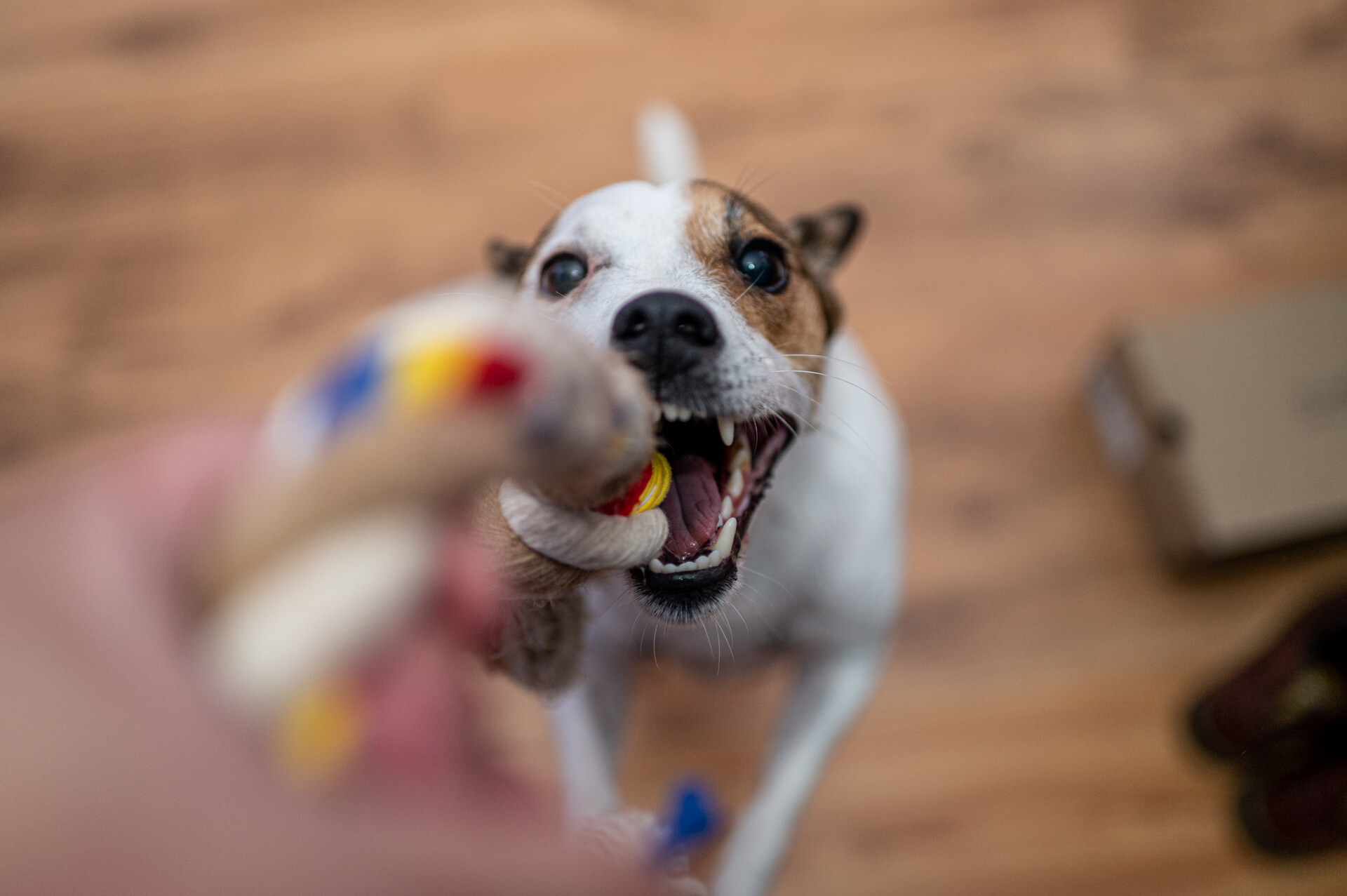
3) Explore different areas with the dog
Finally, take a walk with the dog and visit some other areas.
- Some dogs will act completely different indoors than outdoors, or in a busy area compared to a quiet one.
- Many shelters have more than one area for adopters to interact with the dogs, like an indoor meet-and-greet room and an outdoor play yard.
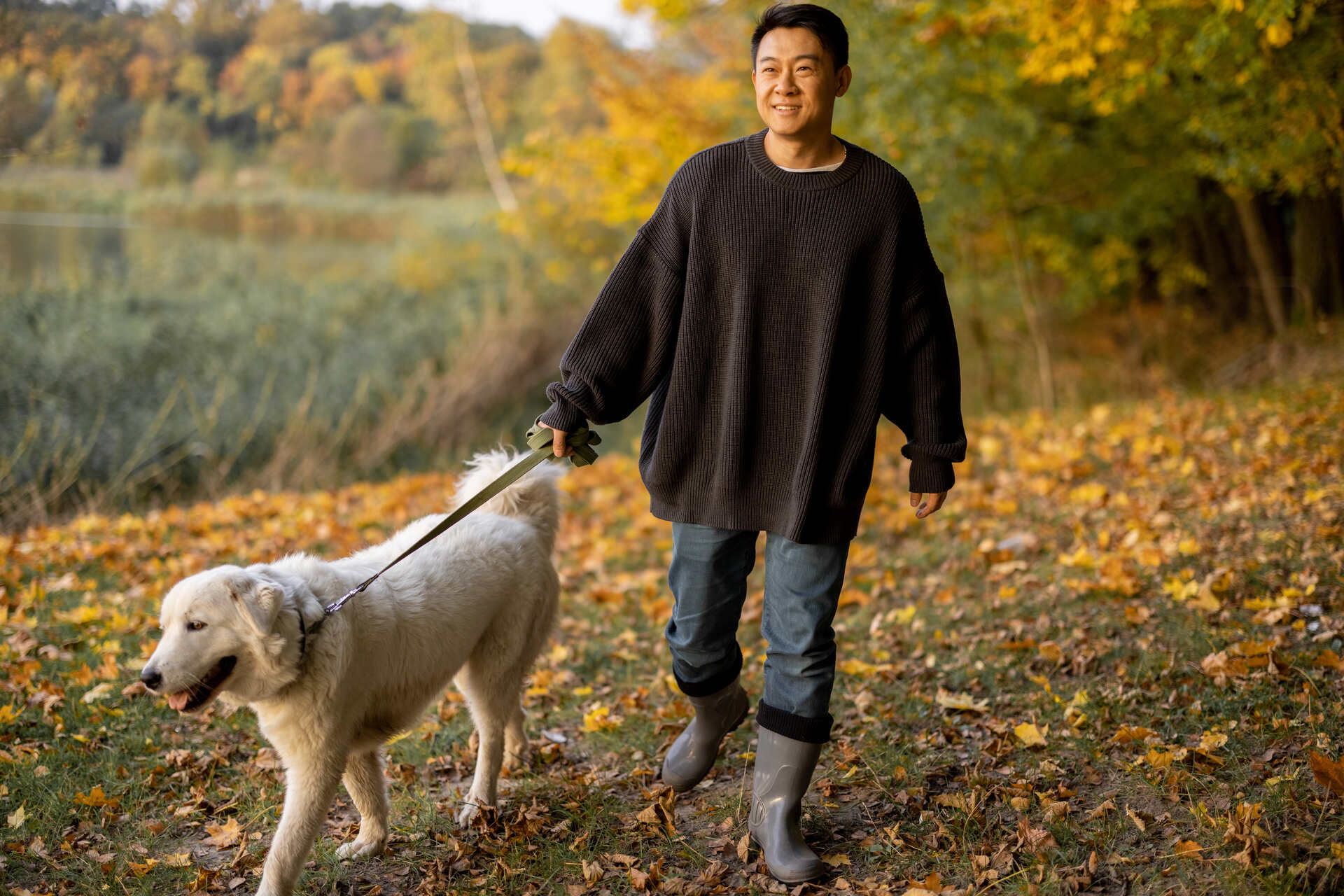
💡Taking your new potential buddy with you out on a walk is a great way to tell: is this dog likely to run away at any point when we’re outdoors together?
Because with all the reasons dogs run away from home, you do want to plan ahead for a “missing dog” situation – much in advance.
Read more: Why Do Dogs Run Away? 6 Reasons Behind It
Pay another visit to your prospective furry friend
A dog’s behavior can vary depending on how they’re feeling, what they were doing before you interacted with them, the time of day, their energy and hunger level, and more.
- Some dogs may be quiet in the mornings and crazy in the afternoon.
- It might be that your dog of choice just woke up from a nap and was then really tired when meeting you.
So it’s a good idea to visit the dog a few hours later, or on another day, to get an idea of the dog’s different moods. That way, you can be more confident that the dog will be a good fit for you.
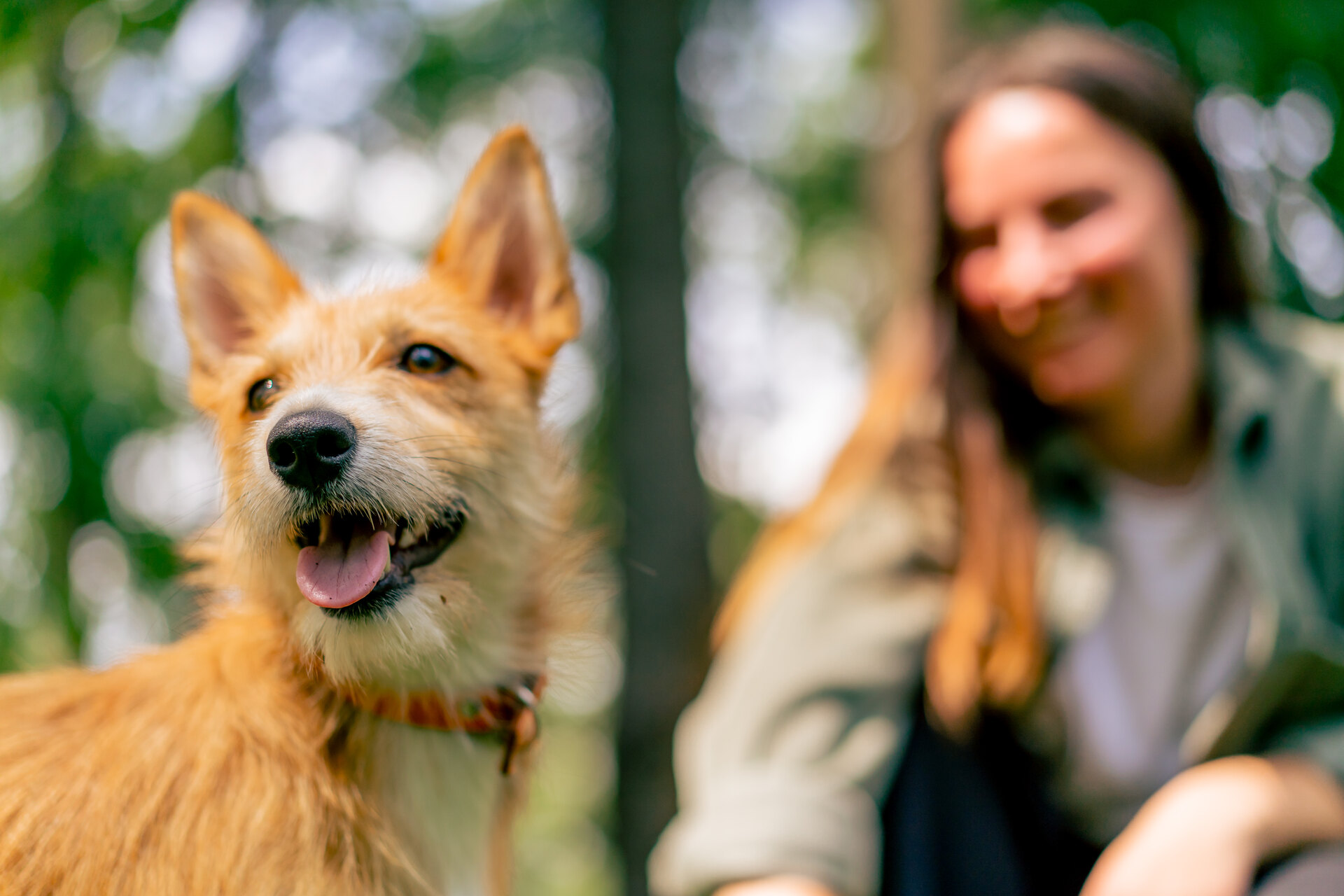
Prepare for your new dog to come home
Once you’ve decided on the dog that you’d like to adopt or bring home, you’ll want to purchase everything you’ll need to care for the dog before you bring the dog home with you. So consider investing in:
- A collar or harness
- A leash
- An ID tag
- Dog food, food and water bowls
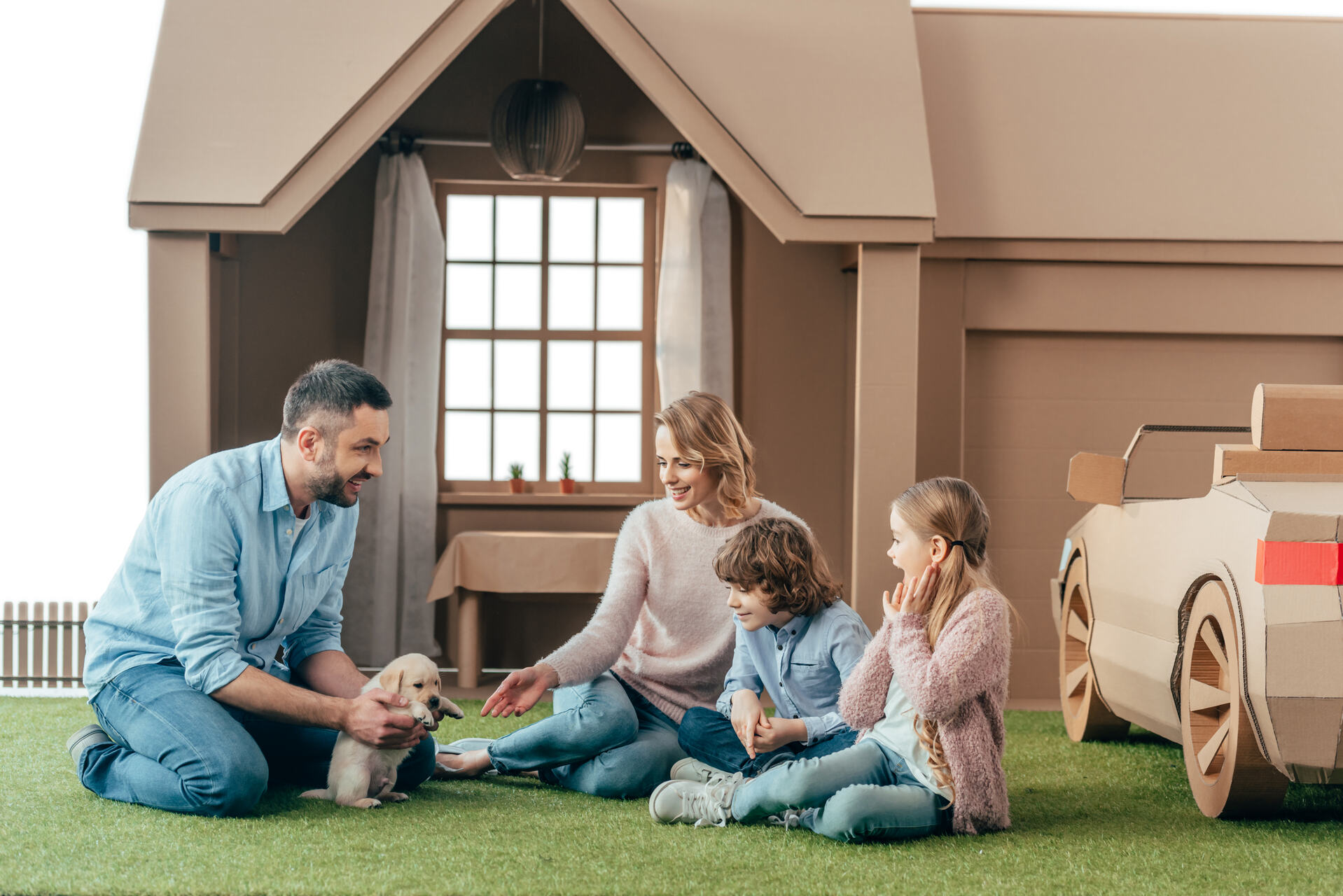
- A dog bed, toys, and blanket
- A crate, cage and/or travel carrier
- A local vet who can check up your dog – as well as administer their vaccine shots, get them microchipped, and care for them on an ongoing basis
- A training school nearby, if necessary – else you’ll have to invest a considerable amount of time house-training your new adoptee and teaching them basic obedience commands
- Where you can update your microchip details on the national database
And most importantly…
Invest in a GPS tracker for your new adoptee
There’s a reason why both shelters and experienced dog parents recommend strapping a GPS tracker to your new buddy’s collar.
⚠️ Why? Because as an adoptee, your new dog still doesn’t 100% know or trust you yet – and there’s always a chance something in their new environment might spook them.
All of which can lead your dog to run away at the slightest loud sound or after a woodland animal while out on a walk – and be unable to find their way back “home.” (Since “home” is still so new, after all.)
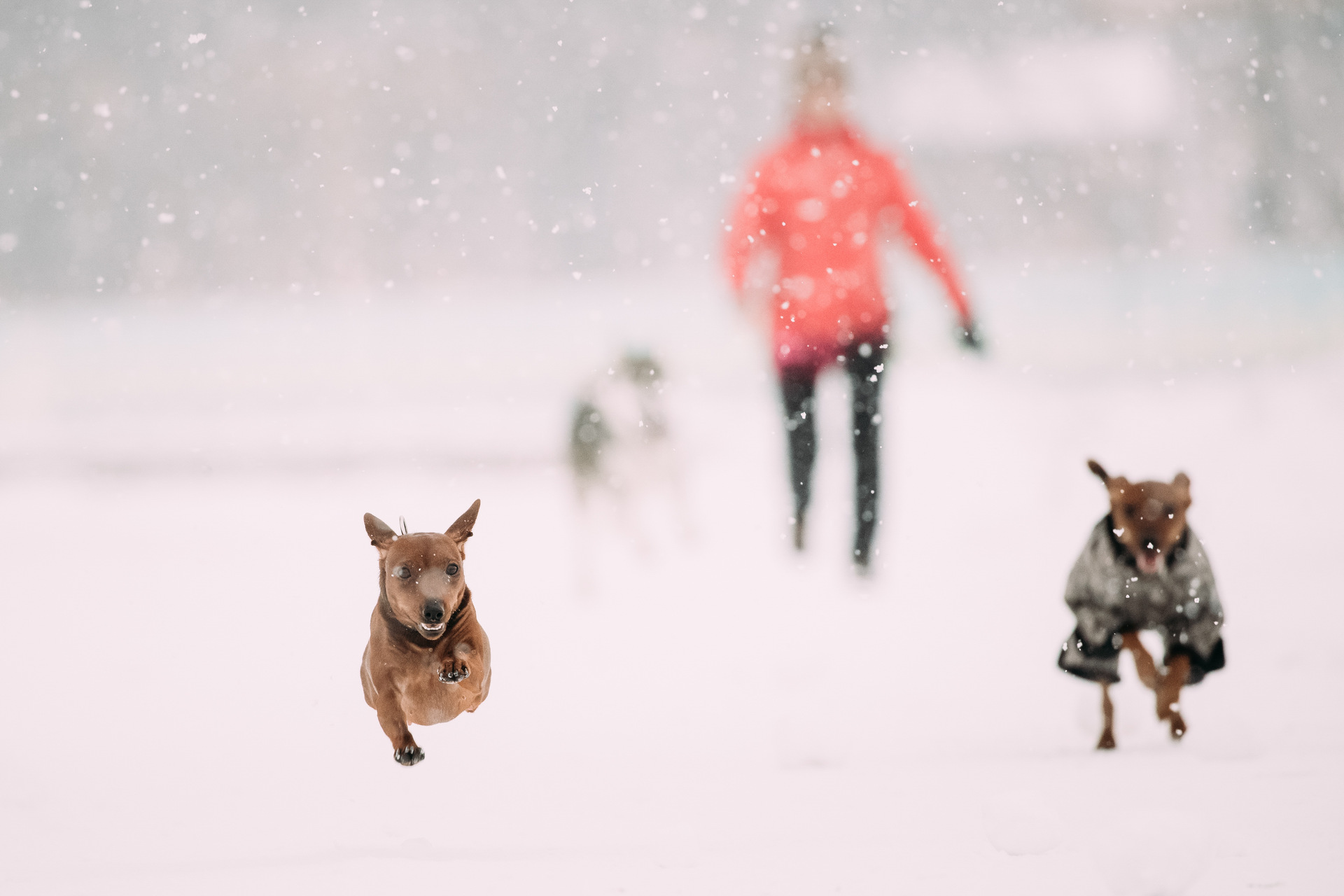
But hey, don’t take it from us. Here’s a bit of expert advice from Alex Voenken, founder of Setter Rescue Netherlands:

“…they might still be prone to anxiety – be it from their past experiences or the stress of a new environment. All of which make them more likely to suddenly run away, despite all the safety measures we take.
Ultimately, even a few seconds of negligence can be enough to make a dog run away.”
And it’s exactly for these moments that the Tractive tracker is the perfect solution to find your dog again as quickly as possible. Especially since the dog does not yet know where their home is during the first period – neither do they know nor trust you as much.“
Or from experienced dog parent, Lisa van Roon who would recommend the Tractive GPS to…

“…every pet parent, hands down. If my friends get a dog for the first time, I always suggest they get a Tractive device, first thing.
And to be completely honest, I don’t see why people wouldn’t! It’s convenient, safe, comfortable – and you never know what could happen to your pet when out on a walk together.
You can train any animal to stay close to you and work together, you could have the best-behaved dog that stays by your side all the time – but you have to consider the worst case scenario as well.
They could get hit by a car or a bike, attacked by another dog or animal (like Charlie was, twice now)…you just never know what could happen!
Which is why I would suggest all dog parents just strap a Tractive device to their dogs’ collars. So you know you can always find them.”
With these steps in place, you’ll be on track to…
Be the best dog owner you can be!
When you finally get your new pup home, you’re now that much more likely to give them the loving forever home they’ve been dreaming of. Just make sure to:
- Plan with your budget in mind well in advance. Keep in mind that adoption fees don’t include ongoing costs for caring for your dog.
- Keep in mind factors like your lifestyle, living situation, as well as your new dog’s age, size, and breed before adopting.
- Consider adopting, not shopping. In the US alone, overcrowded animal shelters could benefit tremendously from you taking in one of their dogs rather than buying one from a pet store.
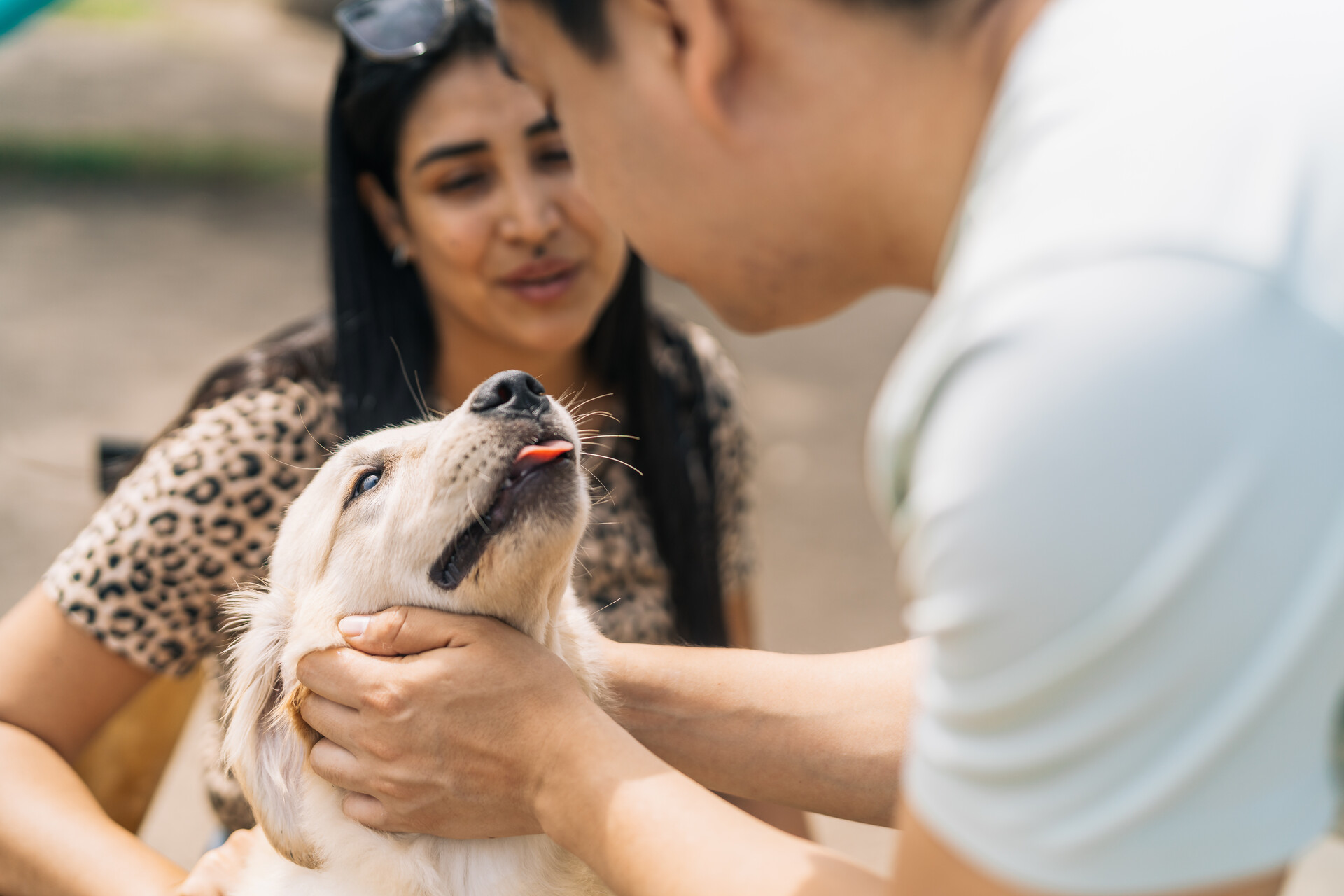
- Get to know the dog you’re considering adopting by observing them from far off, playing with them, and taking them out on a walk to see how they behave – and whether they’re likely to run off.
- Prepare your home to welcome your new buddy, with new toys and a place to sleep in. (As well as their new leash, ID tag, and harness.)
- Get in touch with a local vet for their regular checkups.
- Find a training school near you to get your new adoptee started with obedience training.
And finally…
- Strap a GPS tracker to your new buddy’s collar – to plan ahead for an emergency where fear, anxiety, or just excitement drives them to run off too far from safety.
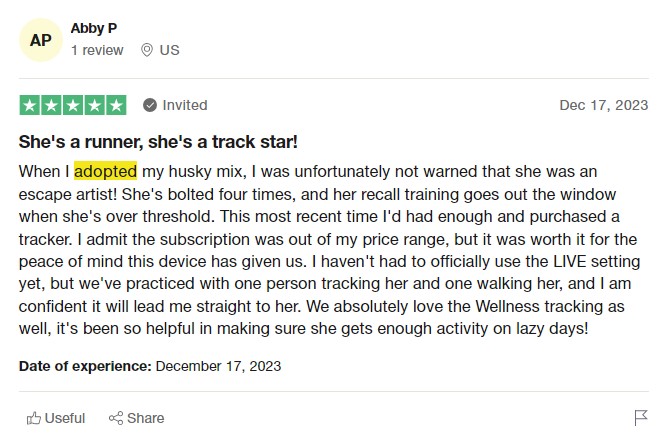
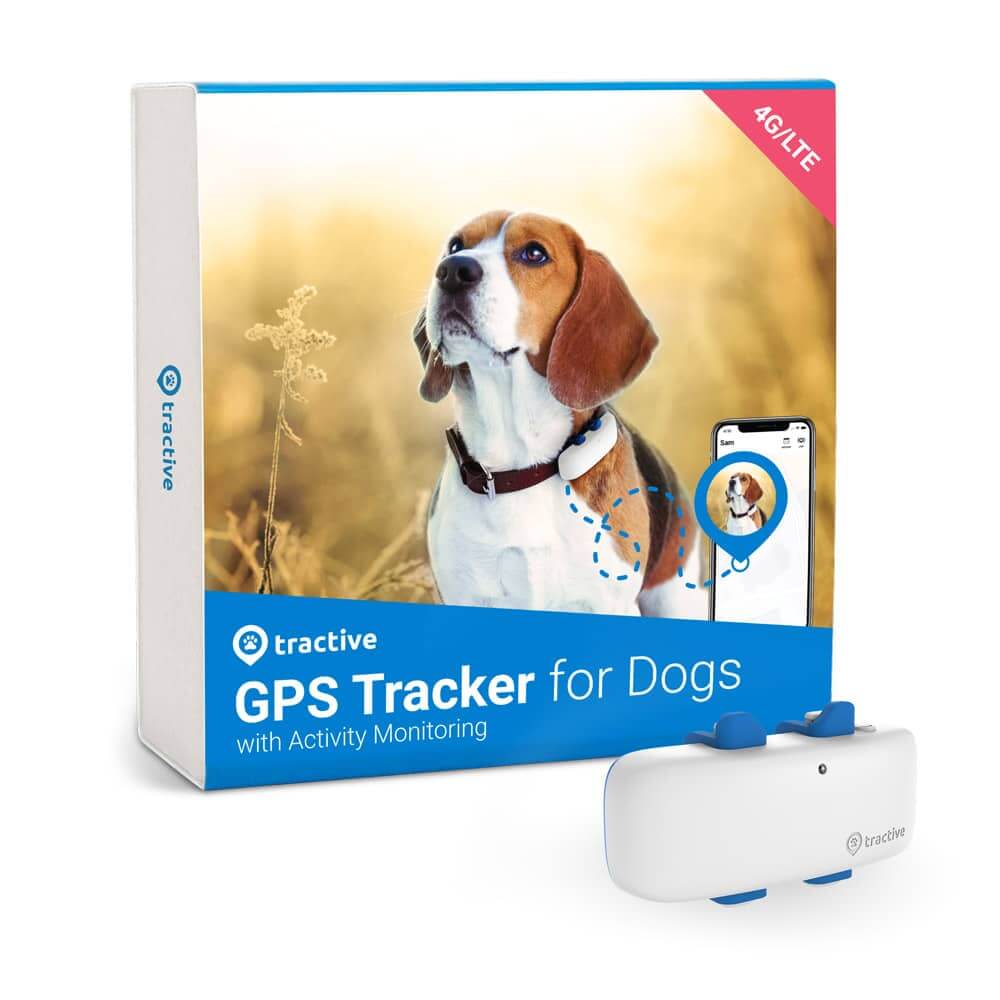
Always know where your dog is
Follow every step in real-time with unlimited range. Get alerts if they wander too far. Keep them happy & healthy with Wellness Monitoring. And let others – like walkers or sitters – keep an eye on your dog too.
For more tips on the adoption process, here’s a video explaining it firsthand:
And if you’ve liked this post, share it with a friend or a loved one considering adopting a dog – and let’s help build a safer, kinder world for our furry friends together.




